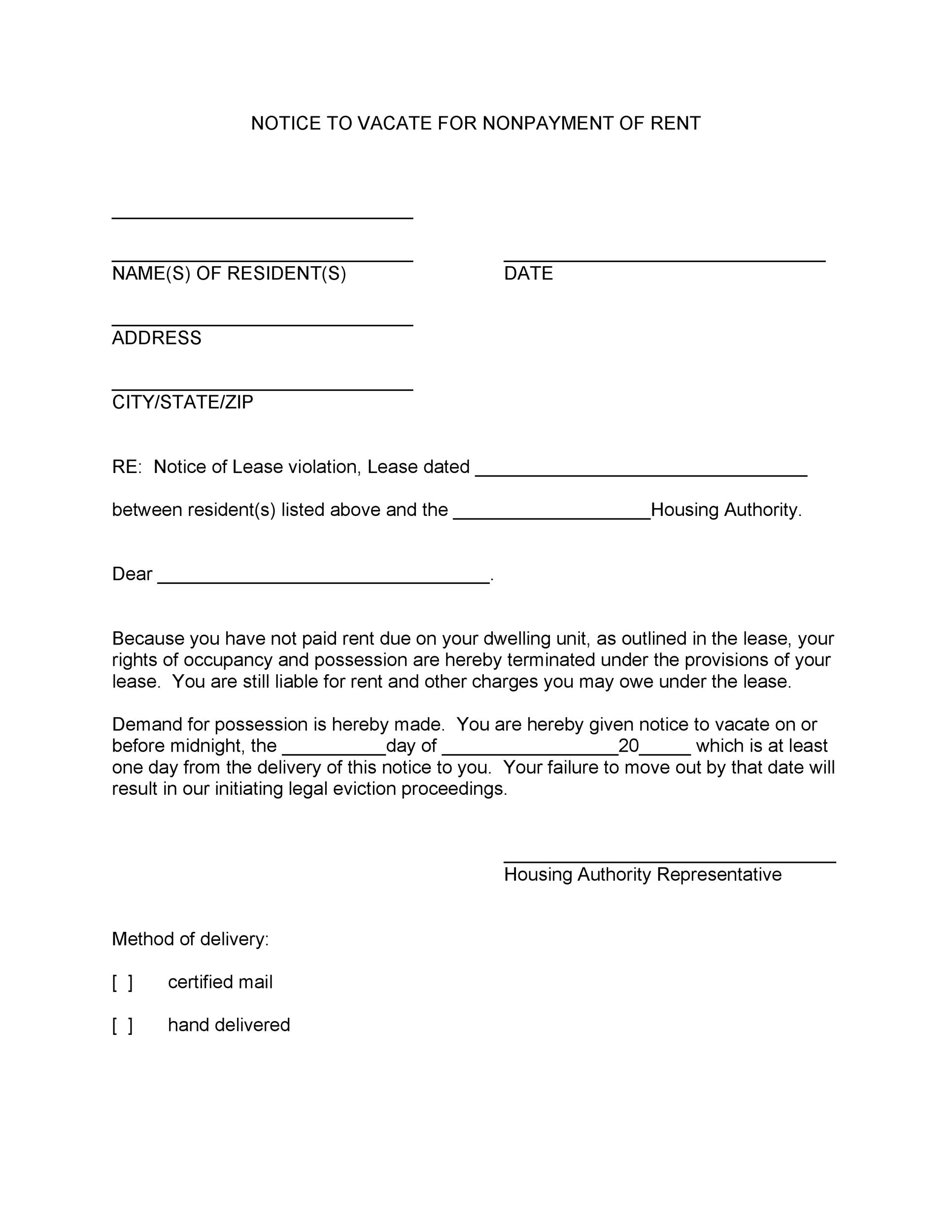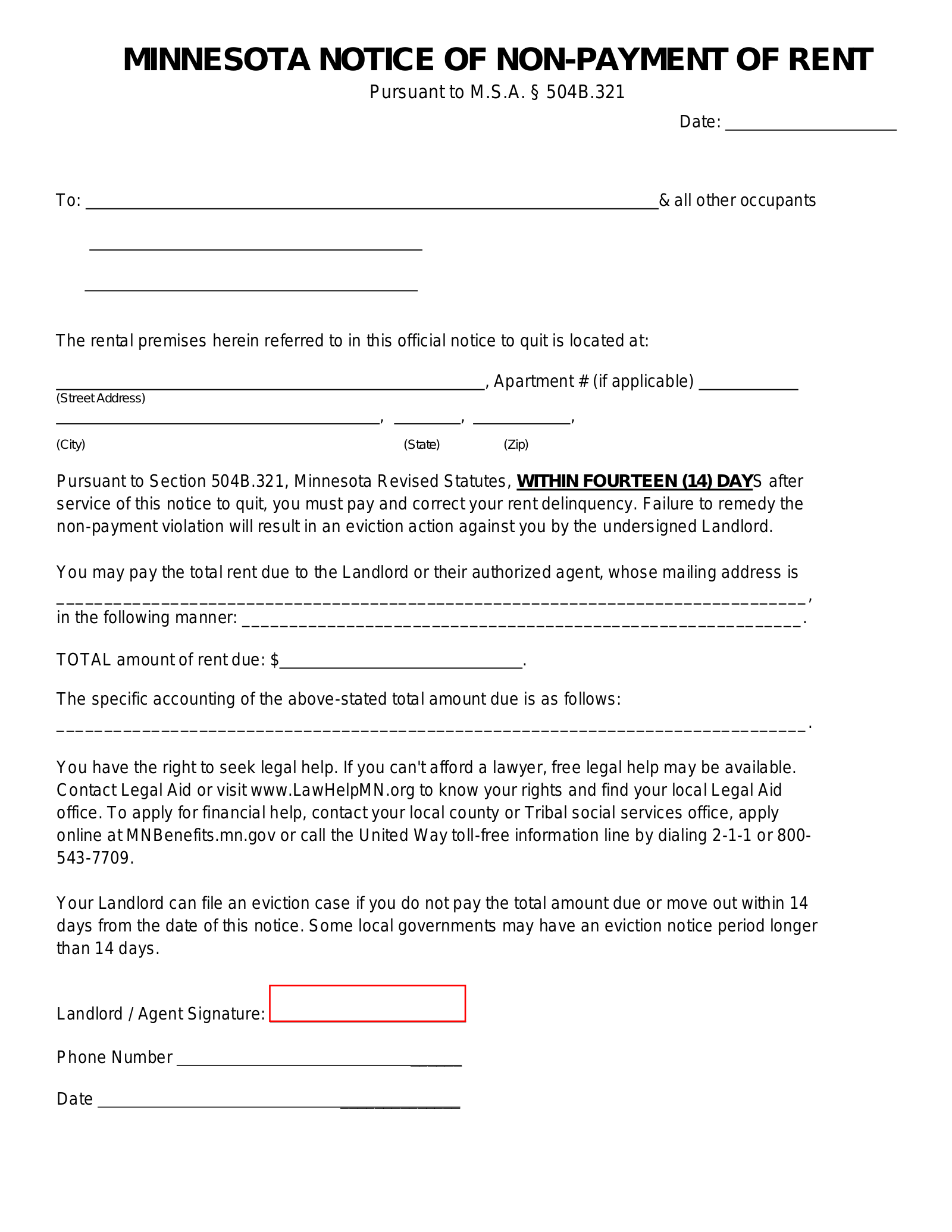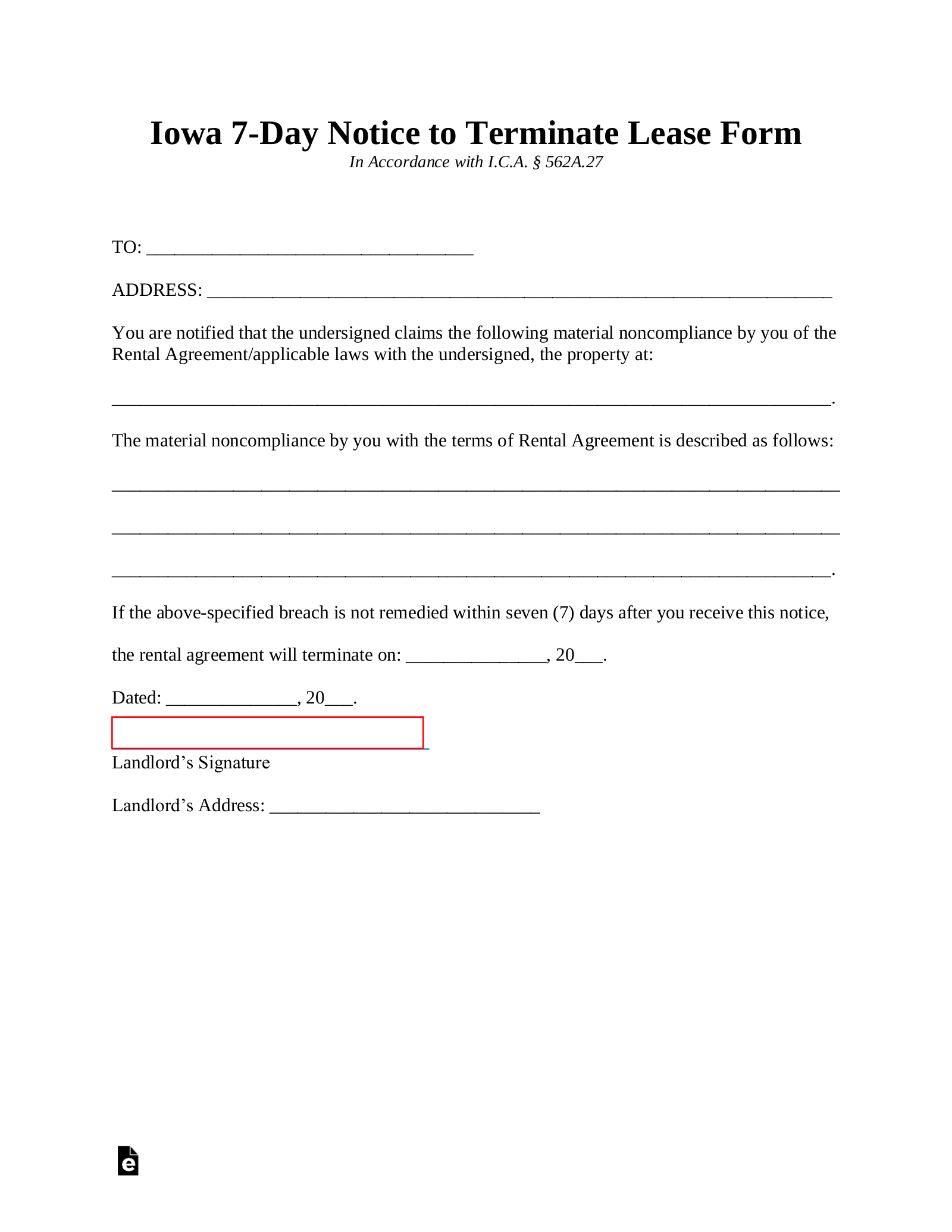

If the tenant does not want to rent under those terms, the tenant can give the landlord a 30-day notice to move out and vacate the property.Ī landlord CANNOT use a 30-day notice to change a term lease. For example, if a landlord is renting month-to-month and wants to raise the rent, make the property no-smoking, no longer allow pets, or make any other change to the lease, the landlord must give a 30-day notice to the tenant before those changes take effect.

You can take immediate legal action if you believe that the tenant is a threat to the health and safety of themselves or other tenants.The 30-day notice is most commonly used to terminate a month-to-month lease, but it can also be used to change the lease. Holds over past the period agreed upon to rent the propertyĪdditionally, if you’ve already gone through the lease termination process, then a tenant is not permitted to remain on the property and can be evicted without notice.Refuses to pay rent in advance under terms of their contract.Commits waste such as willfully destroying the property.This includes situations where a tenant does any of the following: Tenants may be evicted in some limited circumstances without notice. Tenants can get additional information about renting in Indiana in the Renting in Indiana Handbook from Indiana Legal Services, Inc. If your landlord has changed the locks or shuts off your utilities without a court order, you may be able to use an emergency possessory order to get access to your home or belongings. Landlords are not permitted to engage in “self-help” evictions to try and force you to move out. Example of a Claim for Possession of Property from Bartholomew County, IndianaĮviction Information for Indiana Tenants and Landlords Tenants.A judgment will be made, and the tenant will either be allowed to remain on the property or forcibly removed by the sheriff. The tenant must be served a notice that indicates when they should appear in court to defend against the eviction.Īt the hearing, the court will hear a landlord’s arguments and any defenses that a tenant may have against the eviction. Step 4: Serve the eviction documents on the tenant Emergency orders may be granted if the tenant is engaging in harmful or damaging behavior while on the property. A landlord or tenant can also file emergency possessory actions in small claims court as well.

In Indiana, evictions can be filed in Small Claims Court when the amount of rent due is less than $6,000. The tenant can either fix (or “cure”) the problem, or move out within the timeframe provided by the notice. If you can’t find your tenant, then you can deliver the notice to anyone who resides on the premises, or post the notice on the tenant’s door. The first step in the eviction process is to deliver the appropriate Indiana eviction notice to the tenant in person.
#Notice to quit code#
#Notice to quit pdf#
In Indiana, eviction lawsuits are governed by Title 32, Article 31 Landlord-Tenant Relations of Indiana.įor reference, an Indiana Eviction Notice is also referred to as:ĭownload a free eviction notice customized for Indiana state law below in MS Word (.docx) or Adobe PDF format.ģ0-Day Lease Termination: Use this notice to let a tenant know that you’re ending a month-to-month lease, and that they must prepare to leave your property.

Your eviction notice must be written according to Indiana state law, and give your tenant the legally required amount of time to respond or move out. If you’re a landlord seeking to evict a tenant, use an Indiana (IN) eviction notice to begin the process.


 0 kommentar(er)
0 kommentar(er)
